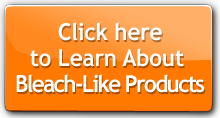Washing Away Your Eczema
Research suprisingly shows household bleach can help improve this irritating skin condition.
By Maureen M. Salera
If you’ve suffered from severe chronic eczema, you know the cycle well. As eczema flares, it sucks all the moisture from your skin, leaving severely dry, cracked and itchy fissures in its reddened path. The raw and irritated skin creates a brittle environment that opens the door to infection. As your skin begins to ooze, crust and itch incessantly, you return to your dermatologist to seek relief.
Your dermatologist will likely prescribe topical and/or oral antibiotics to combat your eczema-induced infections. While these may work for you in the short term, you are often repeating the process a few weeks later when your eczema flares again. Then you worry about antibiotic resistance occurring with this repetitious regimen.
But did you know there could be another solution for you? And it could be hiding right underneath your kitchen sink?
The Role of Bleach
That’s right, household bleach may help stave off severe chronic eczema, according to a study that was published in the May issue of the journal Pediatrics . The study, which followed 31 children-ages six months to 17 years-who had moderate to severe eczema and concurrent staph infections, found that adding bleach to bathwater can significantly improve the inflammation and itching that characterize an eczema flare up.
The theory is that the bleach is not clearing the eczema itself, but the staph infections that are found on the skin of people with moderate to severe eczema, explains Amy Paller, MD, Walter J. Hamlin Professor and Chair, Department of Dermatology at Northwestern University’s Feinberg School of Medicine, and the study’s senior author.
During the study, half of the participants soaked in diluted bleach baths, while the other half soaked in placebo baths twice a week. All patients were also on a 14-day antibiotic treatment regimen and randomly received intranasal muciprocin ointment treatment to battle the staph infections.
After one month and then after three months, Dr. Paller and her colleagues noted that the participants who took the bleach baths showed a significant decrease in the severity of their eczema.
"We are talking about vast improvement," says Dr. Paller, who is also a professor of pediatrics at Northwestern. While the study participants on the bleach baths also received the antibiotic ointment in the nose, the
fact that the eczema improved dramatically on body areas submerged in the bath-and not on the exposed face-suggests that the bleach bath would be just as effective on its own, she adds. In fact,
she’s seen it work for years. "When I see oozing and crustiness in the cracks of kids’ hands and feet, I know that a bath tub with some bleach will mean that they are cleaned and healed the next time I see them," she says, adding that many of her patients don’t use the muciprocin ointment in the nose.
While Dr. Paller and her colleagues focused on children in the study, she says the bleach bath treatment would theoretically be equally effective for adults who suffer from moderate to severe eczema with accompanying staph infections.
The Regimen
To see if you’d be a candidate for the bleach baths, consult your dermatologist first to ask about how this might fit in with your treatment strategy.
If you get the go-ahead to try the bleach bath treatment, Dr. Paller recommends taking bleach baths at least two to three times a week. Daily bleach baths are ideal, she adds, but sometimes that frequency isn’t feasible. "Part of the strategy is that we want it to become routine," she says.
To make up the bath, dilute one-half cup of bleach into the water of a fully-filled, standard-size bathtub (and one-quarter cup if the bathtub is half full). "But, if you have a Jacuzzi tub, you have to increase the amount of bleach," she says. After you soak in the tub for five to 10 minutes, pat dry and moisturize your skin.
While Dr. Paller is a firm believer in the bleach baths, she offers a few cautionary points. If you are having a severe eczema flare with considerable raw skin, the bleach bath-or any bath-may sting too
much, so wait until your skin clears from the cracking. This may require a course of oral antibiotics and intervention with anti-inflammatory ointment, she adds. Also, she advises against ever putting undiluted bleach directly onto your skin.
Plus, the value of bleach baths has not been tested for people with mild to moderate eczema, she adds. Those people can adequately control their eczema with topical anti-inflammatory ointments and emollients alone, and are not as prone to infections, she says.
Maureen M. Salera, a former managing editor at ADVANCE , is a freelance writer in the Philadelphia area.
Copyright ©2011 Merion Matters
2900 Horizon Drive, King of Prussia, PA 19406 • 800-355-5627
Publishers of ADVANCE Newsmagazines
www.advanceweb.com
ADVANCE for Healthy Aging | Printer Friendly 7/14/11 2:44 PM
Original Article at: http://healthy- aging.advanceweb.com/Editorial/Content/PrintFriendly.aspx?CC=208601


